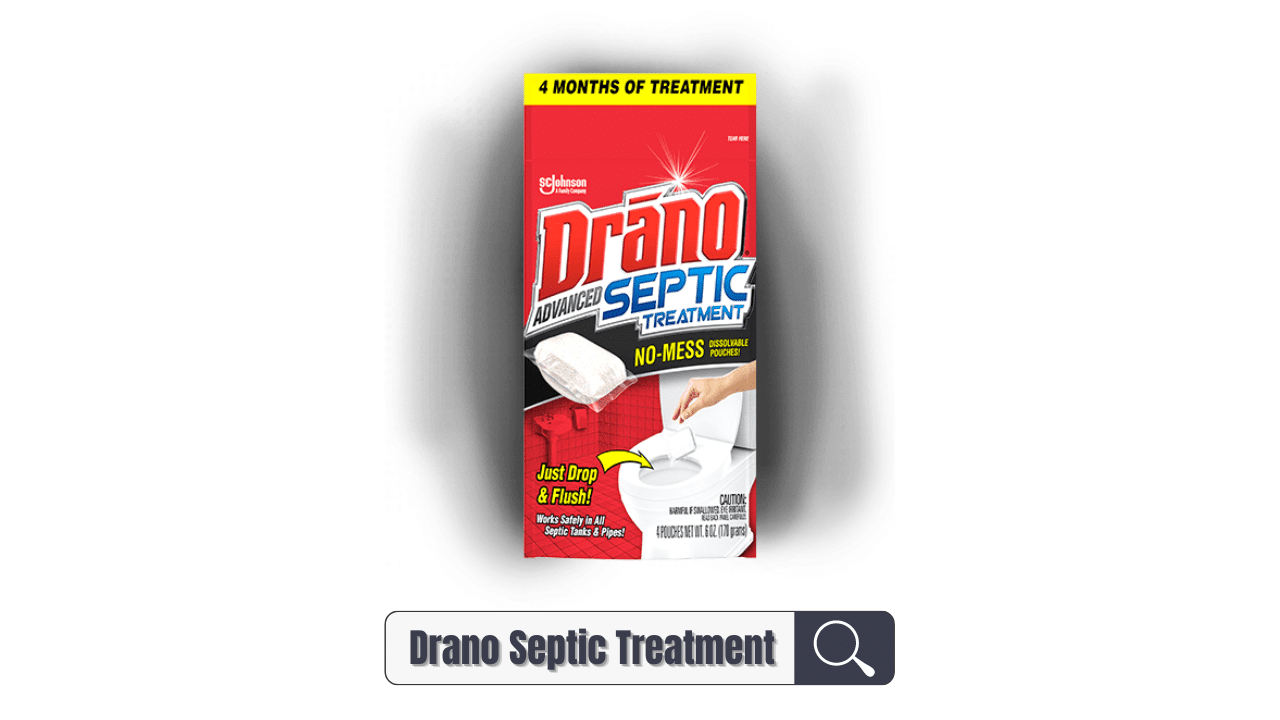A house must be taken care of, and that includes gross and often smelly parts in our house: our septic system. But we should be aware that no matter how clean and protective we are with our septic system, we will have to deal with a clog at some point and it is inevitable. Whenever clogging happens, it often gives us headaches and the initial thought every homeowner thinks about: “how can we fix this?”.
This type of problem at home needs to be fixed as soon as we can or it might bring a whole lot of problems. When clogs do happen, it is best that every homeowner knows how to deal with these problems. Some people instinctively use boiling water, baking soda and vinegar, some use dirt-picking hoses, and some resort to chemical drain clog removers such as Drano.
But the question is, is Drano really suitable for septic systems? Before we talk about Drano, let's get to know what septic systems are first.

Get to Know Septic Systems
A common septic system consists of a septic tank and a drain field, also called a soil absorption field. These systems are underground wastewater treatment structures, commonly used in residential properties and in areas that wish to disconnect from centralized sewer systems for environmental and structural reasons. They use a combination of nature and technology to treat the wastewater coming from bathrooms, and kitchens. Your wastewater travels down the pipes and into the septic tank. The septic tank then digests solid waste and separates other solid contaminants from the wastewater. Wastewater is then released from the septic tank into a series of pipes or chambers that is buried in the drain field for drainage purposes.
In simpler words, all wastewater that runs out of your bathroom, kitchen, and even laundry areas for some households, goes to the septic tank for waste processing. (Related: Understanding Your Septic System: A Beginner's Guide To Sanitation)

Is Drano Really Good for Your Septic System?
Drano is a gel clog remover that is thick enough so you can easily pour it through standing water and straight to the clog to dissolve it. But this convenience and often good results come with a price: Drano can upset the bacteria colony inside your septic tank that is responsible for efficient solid waste decomposition, which can make your septic tank fail. Plus, Drano contains harsh ingredients that can also make your pipes melt. If you do not want plumbing troubles any time soon, you should stay away from Drano and other chemical decloggers.
How Drano Interacts with the Bacteria Inside Your Septic Tank?
Your septic tank is home to lots of bacteria, and just like the human digestive system, septic tanks are dependent on bacteria to function properly. Bacteria feed on solid waste in the process also known as decomposition. Declogging products that contain bleach, aluminum, sodium chloride, lye, and sodium nitrate are germicidal compounds and can put a stop to the decomposition process. When bacteria are destroyed by these ingredients, your septic tank may not be able to digest solid waste properly and can lead to a complete failure of your septic system. Drano contains bleach, sodium chloride, and aluminum, and you now know what happens inside your septic tank once you use it.
There are other methods to try that are much safer and natural than chemical decloggers such as Drano.

Common Methods to Deal with Clogs
There are other methods that are more eco-friendly and safe to use than Drano, and many homeowners swear by them:
We do not want to deal with clogs every now and then, so here are some guidelines to prevent clogs in the future:
Drano works well and can be used for our drains, but always be aware that it will slowly and gradually ruin your septic system and plumbing system as time goes by. If all methods did not work for your clogging problem, be sure to contact professionals to do the job.
